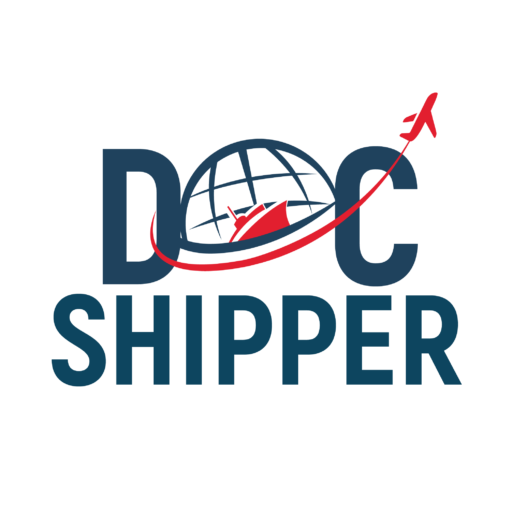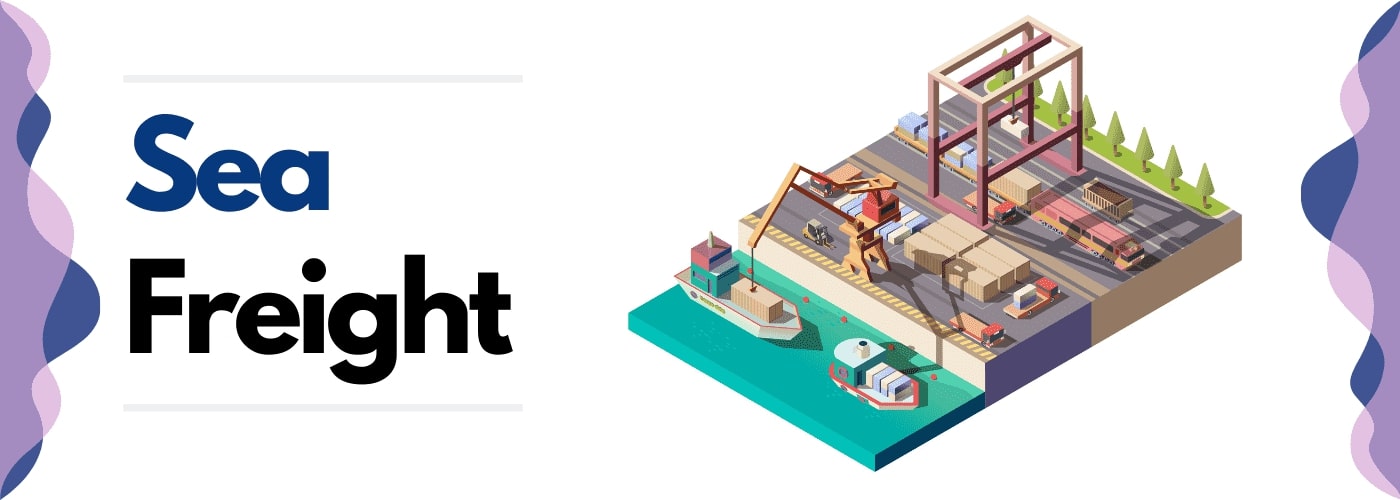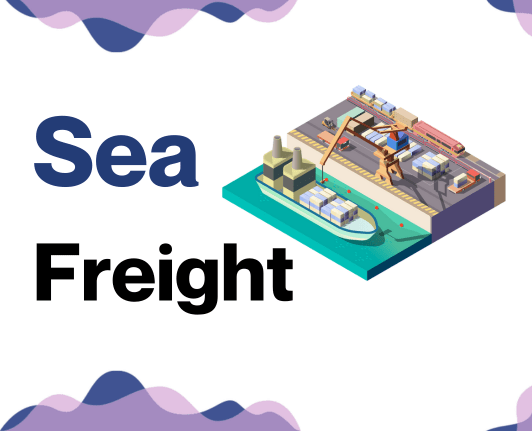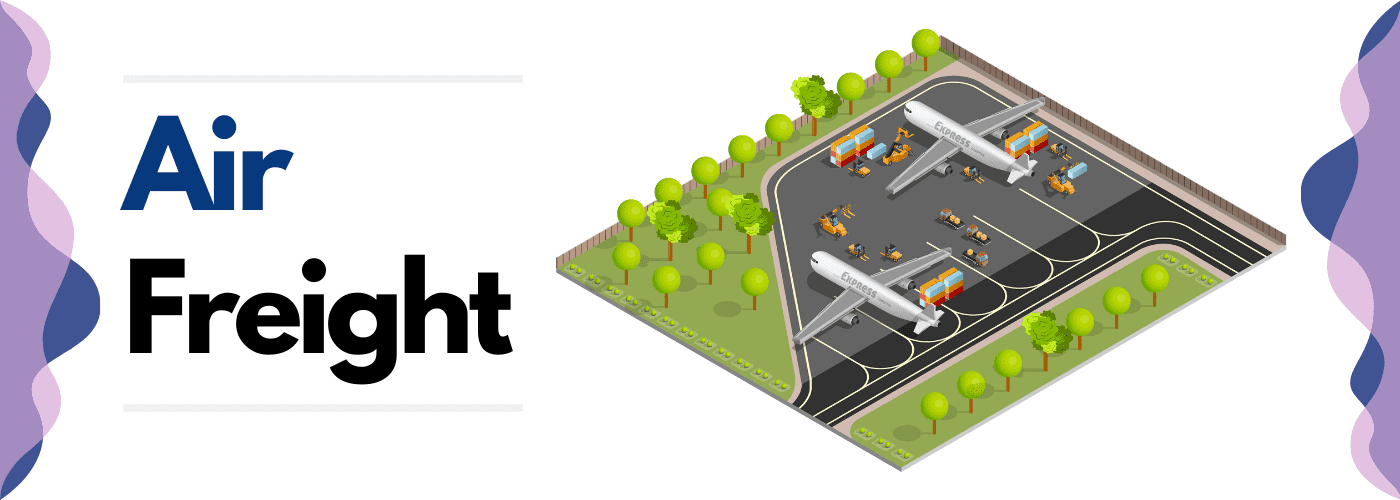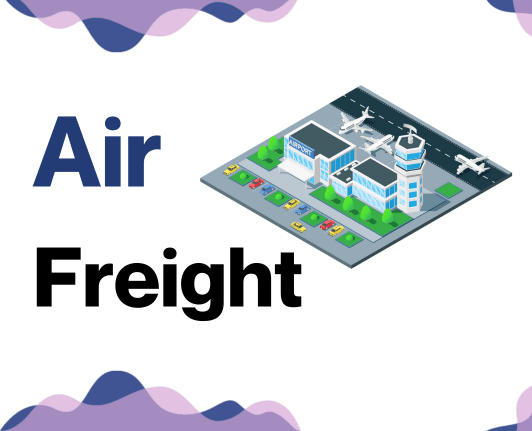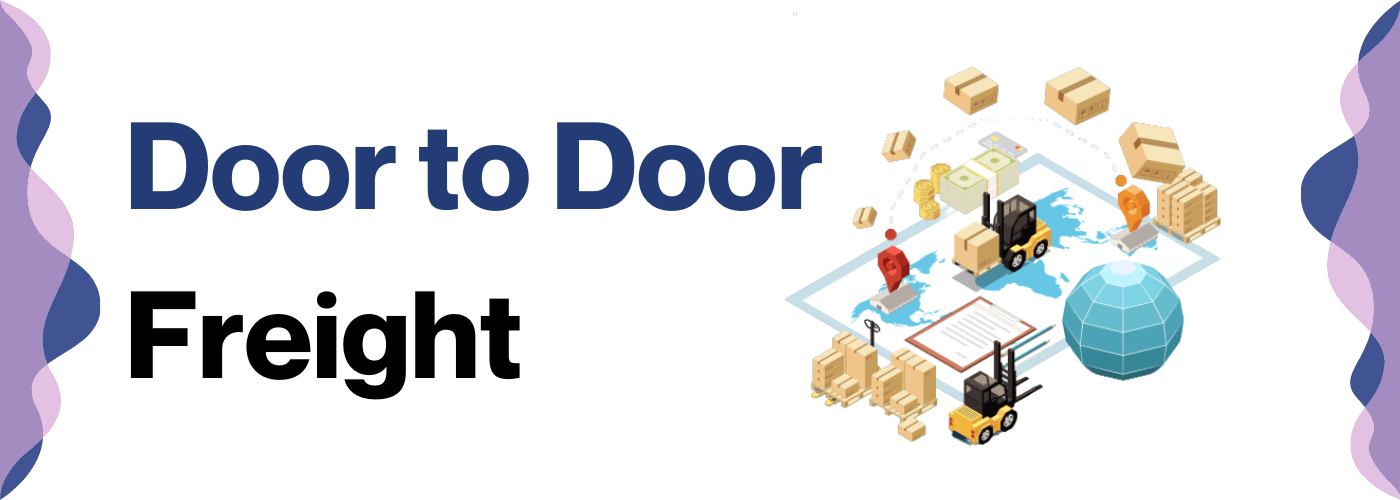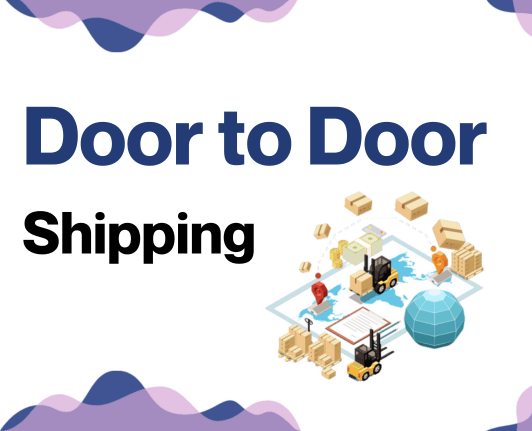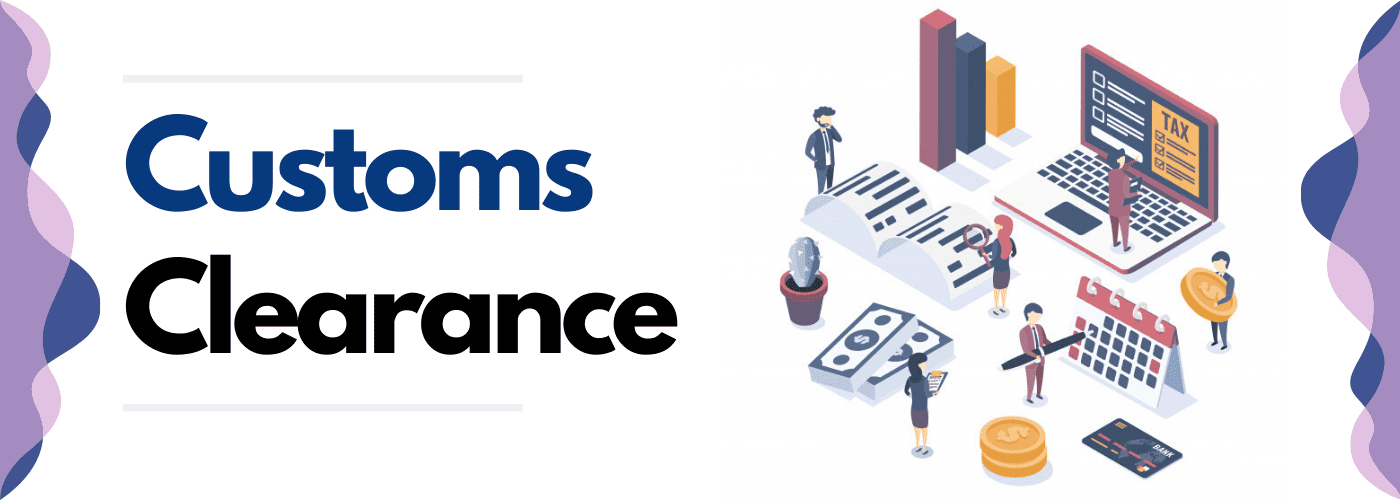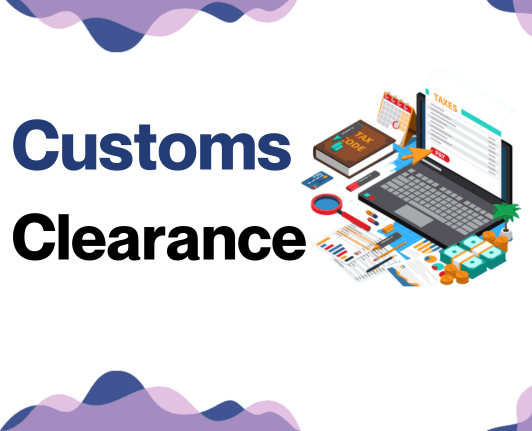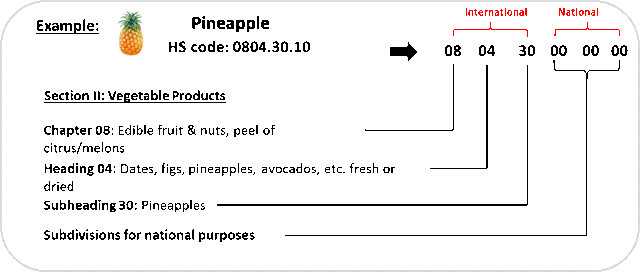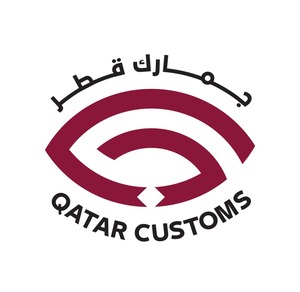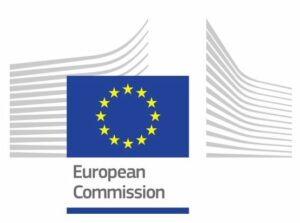Shipping goods might feel like navigating a labyrinth at times- wait, no navigating! Jokes apart, understanding fluctuating rates, varying transit times and intricate customs regulations while transporting freight between Qatar and Europe can certainly seem complex. This guide is here to simplify that complexity. Setting expectations regarding different types of freight options, outlining processes such as customs clearance, filling you in on duties and taxes, and presenting solutions exclusively tailored for businesses - that's what this guide aspires to offer. If the process still feels overwhelming, let DocShipper handle it for you! As an international freight forwarder, we turn the daunting steps of shipping into triumphs, helping your enterprise thrive, regardless of the hurdles transportation poses. Buckle up for an enlightening journey through the world of freight!
Which are the different modes of transportation between Qatar and Europe?
Choosing the ideal mode of transport from Qatar to Europe can be likened to picking a skateboard, bike, or car for your journey to school. You need all the facts to make the right choice. The vast distance, akin to vast stretches of desert and sea, eliminates road and rail options. This leaves us with air and sea freight - our skateboard and bike. Air is faster but more expensive, like a zippy skateboard; while sea, just like cycling, offers larger capacity but with slower delivery times. Your unique needs will determine which ride best suits your trip.
How can DocShipper help?
Shipping between Qatar and Europe? Let DocShipper simplify the process! We handle everything - from arranging transport to taking care of customs clearance. Our team is ready to guide you through each step, ensuring a hassle-free experience. Need assistance? Call our consultants for free advice. Ready to go? Contact us now for a free estimate in under 24 hours.
DocShipper Tip: Sea freight might be the best solution for you if:
- You're dealing with hefty quantities or large-scale goods. Sea freight is your go-to for maximizing space without stretching your budget.
- Your cargo doesn't have an urgent deadline, as sea freight typically has longer transit times compared to air or rail.
- Your shipping routes are between major ports, allowing you to leverage the extensive global network of sea shipping lanes.
Sea freight between Qatar and Europe
Dive into the bustling world of sea freight between Qatar and Europe, the economic lifeline connecting vibrant industrial centers! Doha's shimmering Hamad port, the gateway to Qatar's oil-fueled economy, hums with activity, shipping bountiful goods to Europe's bustling harbors like Rotterdam and Antwerp. This salt-sprayed voyage, while admittedly not the fastest kid on the block, is undoubtedly your cost-effective go-to for heavy payload transport. Imagine it as a slow but steady tortoise in our frenzied logistics race, carrying the weight of your business aspirations without breaking a sweat.
Shifting gears, let's acknowledge the elephant in the room: obstacles. Like a ship navigating stormy seas, many businesses grapple with frustrating pitfalls in this complex trade route. Ever faced nightmares untangling documentation red tape or deciphering cryptic customs protocols? Fear not. We're here to drop the anchor on these challenges, spotlight invaluable best practices, and uncover trade specifications to streamline your journey. So brace yourselves, it's time to sail smoothly through these choppy international trade waters.
Main shipping ports in Qatar
Port of Hamad
Location and Volume: Proving crucial for international trade, the Port of Hamad is situated in Umm Al-Houl, Qatar, south of the capital, Doha. It is Qatar's main seaport, handling an impressive 2 million TEU per year.
Key Trading Partners and Strategic Importance: Key trading partners include China, the USA, India, and various Gulf countries. Hamad Port serves as a key trade route for international businesses, playing an instrumental role in opening new markets for Qatari products.
Context for Businesses: If expanding your distribution capabilities in line with emerging markets in the Gulf region is on your agenda, the Port of Hamad should be a key pivot in your shipping strategy due to its position as a critical hub in the region. It presents a cost-efficient option, with cutting-edge loading and unloading equipment, extensive storage facilities, and the ability to handle a vast range of goods and shipment sizes.
Ras Laffan Port
Location and Volume: Situated in Ras Laffan city, Northern Qatar, Ras Laffan Port is pivotal for energy-related shipments, specifically handling Liquified Natural Gas (LNG) cargo.
Key Trading Partners and Strategic Importance: This massive LNG facility has strategic partnerships with countries heavily reliant on LNG, including Japan, India, South Korea, and China. The port is integral to Qatar's leading global position as an LNG exporter.
Context for Businesses: Concentrating on energy trading, particularly in the LNG sector? Ras Laffan Port could be paramount to your shipping strategy, due to its specialized capabilities in LNG handling and high-volume capacity. Its proximity to the largest gas field in the world—the North Field—provides an impressive logistical advantage for energy traders.
Port of Mesaieed
Location and Volume: Particular to bulk cargo, the Port of Mesaieed is located in southeastern Qatar, handling an array of cargo types -- from dry bulk to break bulk, project cargo, and RORO operations. It handles an impressive 1.3 million TEU per year.
Key Trading Partners and Strategic Importance: The port handles international trade, with significant partners including East Asia, India, and European countries. MESAIEED's strategic importance arises from its proximity to Qatar's industries, making it vital for import of raw materials and export of produced goods.
Context for Businesses: If your business entails the frequent shipping of bulk and project cargoes, the Port of Mesaieed can play a key role in your cargo transport operations, thanks to its special handling equipment and sizable capacity. Its extensive connectivity and location near main industries offer significant advantages for your supply chain needs.
Main shipping ports in Europe
Port of Rotterdam
Location and Volume: Located in the Netherlands, Port of Rotterdam is Europe’s busiest port and plays a crucial role in international goods transport, boasting a shipping volume of 14.8 million TEUs per year.
Key Trading Partners and Strategic Importance: It serves as the key trade bridge between Europe and other continents, particularly Asia and North America. Its strategic importance rests on its location and the use of innovative technology.
Context for Businesses: For businesses seeking a well-established logistics hub in Europe, the Port of Rotterdam offers vibrant trade routes, modern facilities, and prime access to the European market.
Port of Antwerp
Location and Volume: Located in Belgium, the Port of Antwerp is the second-largest port in Europe by container capacity. In 2022, the port handled around 12 million TEUs.
Key Trading Partners and Strategic Importance: The port is a major hub for goods moving between Europe and North America and Asia. The port's strategic importance is attributed to its extensive rail and inland waterway connections to major European economies.
Context for Businesses: If growing your business across European and international markets is your goal, consider the Port of Antwerp for its extensive intermodal connections and outstanding infrastructure.
Port of Hamburg
Location and Volume: Port of Hamburg, located in Germany, is the third-busiest port in Europe, handling 8.5 million TEUs per year.
Key Trading Partners and Strategic Importance: With strong trade links with China, Russia and other parts of Asia, it serves as a crucial gateway for trade in and out of Europe, backed by superior rail connectivity.
Context for Businesses: The Port of Hamburg could be a key logistics choice for businesses aiming to deepen their involvement in Eastern European and Asian markets, thanks to its extensive rail connections and direct trade routes.
Port of Bremen/Bremerhaven
Location and Volume: Positioned in North-West Germany, the Port of Bremen/Bremerhaven handled approximately 5.1 million TEUs, making it a leading player in Europe's maritime trade sector.
Key Trading Partners and Strategic Importance: This port houses Europe's largest terminal for cars, heavy lifts, and other break bulk. Its main trading partners include the USA, Far East Asia, and countries within the European Union.
Context for Businesses: If you are looking to transport non-containerized goods, the Port of Bremen/Bremerhaven, with its high specialisation in breakbulk, should be a top consideration due to its sophisticated handling facilities.
Port of Valencia
Location and Volume: The Port of Valencia located in Spain, is the fifth busiest port by volume in Europe, with a traffic of 5 million TEUs per year.
Key Trading Partners and Strategic Importance: Serving as a major gateway for trade between Europe, the Middle East, and Asia, its central Mediterranean location enables swift and cost-effective connectivity to all colocate continents.
Context for Businesses: Businesses aiming to minimize transit time to Mediterranean and Middle eastern markets should leverage the Port of Valencia's strategic location and extensive shipping connections.
Port of Felixstowe
Location and Volume: The Port of Felixstowe, located on the Eastern coast of the UK, is the largest and busiest container port in the country, handling about 4 million TEUs per year.
Key Trading Partners and Strategic Importance: The port is a major trade hub with Asia, including China and Hong Kong, and serves routes to and from the Americas and other parts of Europe.
Context for Businesses: Businesses planning to expand into the UK market can leverage the Port of Felixstowe's broad network of shipping routes and its proximity to UK's largest consumer markets.
Should I choose FCL or LCL when shipping between Qatar and Europe?
Choosing between Full Container Load (FCL) and Less than Container Load (LCL) shipping methods from Qatar to Europe is a strategic decision that can shape the cost, timeline, and success of your business operations. As significant as picking your route, this decision impacts your business's bottom line and operational smoothness. With our guide, you'll grasp the nuances of these two freight options and be armed to make an informed choice tailored to your company's specific shipping needs.
LCL: Less than Container Load
Definition: LCL (Less than Container Load) shipment means transporting goods that don't fill a whole container. Your goods are loaded into a shared container along with others', keeping the costs down.
When to Use: LCL freight is better when the cargo volume is less than 14 to 15 cubic meters (CBM). It offers price flexibility for low volume shipments, minimizing your commitment as you only pay for the space you use.
Example: Suppose you have a supply of handcrafted vases, weighing 300kg with a total volume of 10 CBM, to ship from Qatar to Europe. LCL shipment can ensure your goods reach the destination safely without having to pay for an entire container.
Cost Implications: LCL freight rates are typically higher per unit of volume or weight than FCL rates due to the additional handling, sorting, and consolidation fees. Despite this, LCL can be more cost-effective for smaller shipments as you're not paying for unused space.
FCL: Full Container Load
Definition: FCL shipping (Full Container Load) is a type of ocean freight where a company books an entire 20'ft or 40'ft container to transport their goods.
When to Use: This is particularly beneficial for large shipments - often over 13/14/15 CBM - because of the its cost-effectiveness for high volumes and increased safety. Your goods are sealed within the FCL container at the origin and remain unopened until they get to the destination, minimizing risk of damage or loss.
Example: For instance, imagine you're a construction company in Qatar shipping 45 CBM of heavy machinery to Germany. Opting for FCL would not only provide a safe, sealed environment for your equipment but would also be a much more economical solution compared to LCL (Less Container Load), effectively lowering your cost per CBM.
Cost Implications: The initial FCL shipping quote may seem high, but in reality, it's cheaper than LCL for large shipment sizes as the cost is spread over more cubes. The expenses can further be reduced if you own a 20'ft or 40'ft container, avoiding container leasing costs and making your international shipping endeavors more financially efficient.
Unlock hassle-free shipping
Unsure about consolidation or full container shipping between Qatar and Europe? Choose DocShipper. Aimed at making your cargo shipping seamless, our ocean freight experts guide you through each critical element, from delivery speed to cargo volume and shipping cost. Equip your business with our personalized approach to meet your unique shipment needs. Ready for a hassle-free shipping experience? Get your free estimation today.
How long does sea freight take between Qatar and Europe?
Sea freight from Qatar to Europe typically takes around 30-37 days. However, actual transit times can fluctially based on several factors - including the specific ports of loading and unloading, the weight, and nature of your goods. Therefore, for a highly tailored and specific quote best matching your shipment needs, we recommend contacting a reliable freight forwarder like DocShipper.
Now, let's dive into the average sea freight transit times between the primary freight ports in Qatar and Europe:
| Qatar (Port) | Europe (Port) | Average Transit Time (Days) |
| Port of Doha | Port of Rotterdam | 30 |
| Port of Doha | Port of Hamburg | 36 |
| Ras Laffan Port | Port of Antwerp | 37 |
*Please note that these are average times and actual transit time may vary.
How much does it cost to ship a container between Qatar and Europe?
Determining the financial implication of shipping a container between Qatar and Europe is not straightforward due to a variety of factors like the Point of Loading and Destination, carrier preferences, nature of your goods, and fluctuations in monthly market trends. Ocean freight rates can widely range, making pinpoint accuracy challenging.
However, we operate by the mantra that every shipping requirement is unique. That's why our shipping specialists provide bespoke quotations to ensure you receive the most affordable and efficient options. Rest assured, navigating the complexities of shipping cost becomes easier and tailor-made to your needs with our expert guidance.
Special transportation services
Out of Gauge (OOG) Container
Definition: An OOG container is a specialized shipping option for out of gauge cargo, or goods that don't fit standard shipping containers due to excess size or weight.
Suitable for: Large pieces of machinery, construction equipment, large industrial parts.
Examples: Wind turbines, excavators, oversized crates.
Why it might be the best choice for you: If you have irregularly sized or heavy cargo that can't fit into standard containers, OOG containers provide a solution made just for your complex requirements.
Break Bulk
Definition: Break bulk is the transportation method of handling goods individually, as separate pieces or 'units', instead of in containers.
Suitable for: Large items that can't be containerized or goods that are loaded individually.
Examples: Construction equipment, machinery parts, or large bales of raw material.
Why it might be the best choice for you: Break bulk is ideal if your goods can't be containerized and require individual handling or when it's the more cost-efficient option.
Dry Bulk
Definition: Dry Bulk shipping involves the transportation of homogeneous commodities in large quantities, known as loose cargo load.
Suitable for: Commodities like grain, coal, iron ore, etc.
Examples: Shipping of wheat, sugar, salt, or coal in large quantities.
Why it might be the best choice for you: If you're handling homogeneous commodities in large quantities, dry bulk shipping offers simplicity and economy of scale to reduce costs.
Roll-on/Roll-off (Ro-Ro)
Definition: Ro-Ro vessels are ships with built-in ramps that allow vehicles and machinery to be efficiently rolled on and off the vessel, providing a seamless shipping method for vehicles.
Suitable for: Cars, trucks, trailers, and other vehicles that can be driven on and off the ship.
Examples: Transporting cars, tractors, RVs, or specialized construction machinery.
Why it might be the best choice for you: Selecting ro-ro shipping ensures simpler loading and unloading processes for your vehicle cargo, reducing the potential for damage during transit.
Reefer Containers
Definition: Reefer containers are refrigerated shipping containers for goods requiring temperature control during transit.
Suitable for: Perishable goods such as fruits, vegetables, dairy products, or pharmaceuticals.
Examples: Shipping of fresh produce, frozen foods, or temperature-sensitive medication.
Why it might be the best choice for you: If you're shipping perishables or temperature-sensitive goods, reefer containers ensure that your products maintain their quality and freshness throughout their journey.
Remember, each shipping method offers unique benefits depending on your specific needs. If you need help figuring out the best option for your business, the team at DocShipper is here to assist. Feel free to contact us for a free shipping quote in less than 24 hours.
DocShipper Tip: Air freight might be the best solution for you if:
- You're up against the clock or have a non-negotiable delivery date. Air freight is your fastest bet for meeting tight timelines.
- Your shipment is on the smaller side, falling below 2 CBM. Air freight is particularly well-suited for compact cargo loads.
- Your goods are destined for locations that aren't well-served by maritime or rail options. Air freight expands your reach by connecting you to a vast array of international airports.
Air freight between Qatar and Europe
Air freight between Qatar and Europe: swift, reliable, and perfect for small, fabulous treasures. Think designer clothing, sparkling jewels, and high-tech gadgets. They fly across the globe swiftly and securely, making your small, costly cargo worth the ticket.
But while air freight offers super speed and security, it can be a tricky terrain for the uninitiated. Many enthusiastic shippers fall into pitfalls, overestimating costs by muddling up weight calculations, or missing cost-saving tricks. It's like setting off on a glorious trip, but forgetting your map and overpaying for your snacks. This guide will help you soar smoothly and dodge those pesky air freight faux pas.
Air Cargo vs Express Air Freight: How should I ship?
Shipping from Qatar to Europe and not sure whether to go for air cargo -when your goods catch a ride on an airline or express air freight (where a dedicated plane does the lifting)? Your choice could really shake up your delivery timelines and bottom line, so let's untangle this puzzle and let your business shine where it really matters.
Should I choose Air Cargo between Qatar and Europe?
Opting for an air cargo could be a savvy move when shipping from Qatar to Europe. Prominent airlines such as Qatar Airways and Lufthansa offer reliable air freight services, making this mode both cost-effective and dependable. However, bear in mind that longer transit times may occur due to fixed flight schedules. If your shipment exceeds 100/150 kg (220/330 lbs), the cost-effectiveness of air cargo could be more appealing. Undeniably, this choice could meet your budgetary needs while ensuring timely, safe delivery of your products.
Should I choose Express Air Freight between Qatar and Europe?
Choosing express air freight for your shipments between Qatar and Europe can suit your needs perfectly if you're dealing with cargo under 1 CBM or approximately 100/150 kg (220/330 lbs). Specialized services like this use dedicated cargo planes, ensuring there are no passengers on board to speed up the process. Renowned international couriers such as FedEx, UPS, and DHL are famous for their express air freight services. If reliability and speed are crucial for your business operations, this option might be best for you.
Main international airports in Qatar
Hamad International Airport
Cargo Volume: Hamad handles more than 2 million tonnes of cargo annually.
Key Trading Partners: Major partners include China, the UAE, India, Hong Kong, and Singapore.
Strategic Importance: Hamad International Airport, located in Doha, is one of the busiest cargo airports in the Middle East. It offers numerous cargo services and serves as a hub for Qatar Airways, a major global airline. Strategically situated, it provides easy access to emerging markets in Africa, Asia and the Middle East.
Notable Features: Hamad boasts of a state-of-the-art cargo terminal with a capacity handling of 1.4 million tonnes of cargo annually and built-in scalability to increase to 2.5 million tonnes. It has a fully automated storage and retrieval system, advanced security systems, and direct airside access.
For Your Business: If your business is engaged with trade partners in Asia, Africa or the Middle East, utilising Hamad Airport might streamline your shipment processes. Its comprehensive cargo services and robust handling capacities can accommodate high volumes of time-sensitive and valuable shipments. Its convenient location and strong network connections ensure your goods reach their destination on time.
Al Udeid Air Base
Cargo Volume: While not purely a cargo airport, Al Udeid handles a significant volume of military freight.
Key Trading Partners: The major partner is the USA, given its status as a US military base.
Strategic Importance: Located 35 km southwest of Doha, the Al Udeid Air Base is crucial for military operations in the region. It is not primarily a commercial airport but does handle a noticeable amount of freight related to military operations.
Notable Features: This air base has the longest runway in the Middle East, making it well-equipped to handle large aircraft.
For Your Business: While Al Udeid Air Base is primarily military-focused, it may provide valuable opportunities for businesses involved in military or defense-related cargo transportation. Its extensive runway can accommodate large freighter aircraft, which might be beneficial if your business handles outsized cargo related to defense sector.
Main international airports in Europe
Amsterdam Airport Schiphol
Cargo Volume: 1.57 million tonnes per year.
Key Trading Partners: China, United States, Russia, Middle East countries, and South America.
Strategic Importance: Amsterdam Airport Schiphol is the third busiest cargo airport in Europe, linked with over 330 destinations globally, making it a prime hub in your supply chain.
Notable Features: Houses a modern cargo complex with state-of-the-art facilities as well as the largest flower market in the world.
For Your Business: If timeliness and connectivity are key considerations in your strategy, Schiphol’s vast network and heavy cargo volumes provide reliable and extensive options for shipping, potentially reducing transit times.
Frankfurt Airport
Cargo Volume: Approximately 2.17 million tonnes per year.
Key Trading Partners: United States, China, South Korea, and India.
Strategic Importance: As Europe's largest cargo airport, Frankfurt airport is strategically located in the heart of Europe, making it a vital distribution point for your goods.
Notable Features: The airport is home to freight wings and agricultural centers, it also has dedicated zones for temperature-sensitive goods such as pharmaceuticals.
For Your Business: Should your shipment need strict temperature control or if targeting European markets, digitized operations of Frankfurt Airport provides high level of reliability and speed.
London Heathrow Airport
Cargo Volume: 1.2 million tonnes per year.
Key Trading Partners: United States, China, Australia, India, and Japan.
Strategic Importance: London Heathrow is the UK's busiest airport for cargo, the airport acts as a direct link to markets in North America and Asia and serves as a critical entry-point into the UK and European market.
Notable Features: Owns Europa Worldwide's £60m purpose-built logistics facility within the Airport.
For Your Business: An excellent choice if your business highly prioritizes fast and secure transfers. Its advanced tech infrastructure helps minimize risk of delay and loss, nurturing your customer trust.
Paris Charles de Gaulle Airport
Cargo Volume: About 2 million tonnes per year.
Key Trading Partners: America, Europe, and Asia.
Strategic Importance: One of Europe’s leading cargo hubs, its location serves as a point of interconnectivity between North America, Europe, and Asia.
Notable Features: Boasts of 'Cargo City,' a dedicated area for freight transport with high-speed road access.
For Your Business: Bringing immense convenience, its own dedicated freight area, Cargo City, provides excellent services and reduces cargo handling time to streamline your logistics process.
Leipzig/Halle Airport
Cargo Volume: 1.38 million tonnes per year.
Key Trading Partners: Primarily Europe, Asia, and the Americas.
Strategic Importance: Recognized as 'Germany's Cargo Airport,' it serves as DHL's main European hub making it a crucial point in the global express transport network.
Notable Features: Offers 24/7 operations for cargo flights with no restrictions and has direct motorway connections to the European road network.
For Your Business: Its 24/7 operation service ensures your shipment is processed swiftly and uninhibited by typical business hour constraints, driving your logistical productivity.
How long does air freight take between Qatar and Europe?
On average, air freight shipping between Qatar and Europe takes roughly 3 to 5 days. However, it's essential to note that this transit time can significantly vary. Factors influencing shipping duration include the specific airports involved, the weight of the shipment, and the type of goods being transported. For precise and dependable shipping times, don't hesitate to consult an experienced freight forwarder like DocShipper.
How much does it cost to ship a parcel between Qatar and Europe with air freight?
Shipping air freight from Qatar to Europe typically costs between $2 to $3 per kg. However, this rate can fluctuate depending on several factors like distance between departure and arrival airports, package dimensions and weight, and the nature of the goods. Determining a precise cost is, therefore, not possible without these specifics. Rest assured, our expert team is committed to providing the most competitive and fitting rates for your unique needs, quoting on an individual basis. Contact us and receive a free quote in less than 24 hours.
What is the difference between volumetric and gross weight?
In Air Freight, Gross Weight refers to the total weight of the goods, including packaging, while Volumetric Weight reflects the space your shipment occupies.
Calculating these weights involves simple math. For air cargo, gross weight is the actual weight of the goods and their packaging, usually measured in kilograms (kg). For example, if your shipment weighed 50kg, it’s simply 50kg (110 lbs).
On the other hand, volumetric weight is calculated by multiplying the length, width, and height of the package in meters, and then dividing the result by a standard volumetric factor, most commonly 6000 for air cargo. Express Air Freight services calculate volumetric weight differently. They divide the product of dimensions by 5000 instead of 6000.
For instance, if your package is 1m length, 0.5m wide, and 0.5m high, your volumetric weight would be 1x0.5x0.5/6000=0.042kg (0.093 lbs). The volumetric weight would have been 0.05kg (0.11 lbs) for express services.
So, why does it matter? Freight charges are based on the higher value between the gross and volumetric weight. If your shipment takes up more space compared to its actual weight (a large box of feathers, perhaps?), you'll be charged by volumetric weight. Conversely, if your package is small but heavy (a box of lead, perhaps?), you'll be charged according to gross weight. This ensures fair pricing that takes into both the size and weight of your shipment.
DocShipper tip: Door to Door might be the best solution for you if:
- You prioritize a smooth, hassle-free shipping experience from start to finish. Door-to-door services manage the entire journey, from initial collection to ultimate delivery.
- You appreciate streamlined communication and would rather deal with one person. A dedicated agent is usually assigned to oversee every detail of your door-to-door shipment.
- You want limit the number of touchpoints for your cargo. Door-to-door services reduce the frequency of transitions between various transport methods, thereby lowering the likelihood of damage or loss.
Door to door between Qatar and Europe
Unpacking 'Door to Door shipping' for you: it's an all-inclusive international freight service, transporting your goods from home in Qatar directly to your destination in Europe. It's a hassle-free choice, bringing efficiency, time-saving, and cost-saving advantages to the table. So are you ready to unlock the perks of this streamlined shipping option? Let's dive in!
Overview – Door to Door
Door-to-door shipping between Qatar and Europe is your hassle-free ticket to managing complex logistics. This service streamlines transportation by managing everything from pickup to delivery, cutting through administrative red tape. However, it might be slightly pricier - a small trade-off for the convenience. This holistic approach to logistics tames the often-complicated world of international shipping, one reason it's a hot favorite among our clients at DocShipper. With door-to-door service, tackle shipping complexities head-on and put your focus where it truly belongs - on your business.
Why should I use a Door to Door service between Qatar and Europe?
Ever dreamed of a magical shipping fairy who grabs your goods from Qatar, neatly transports them, and gently places them at your desired location in Europe? That's pretty much what Door to Door shipping service is, minus the magic wand and fairy dust. Here are five reasons why you should opt for this service.
1. Stress-Free Logistics: You've got enough on your plate without the logistics pickle. Door to Door service takes on this task, handling everything from pick-up at origin to delivery at the destination.
2. Timely Delivery: Got an urgent shipment? In the global village, time is money. With a well-planned and executed Door to Door service, you can rest assured your goods will arrive on time.
3. Handling Complex Cargo: If your cargo could win an award for complexity, this service is your perfect match. Special care is taken to ensure your complicated items are handled and delivered without a hitch.
4. Convenience: Do you want to chase around different transport units across borders? Didn’t think so. With Door to Door service, the same operator handles your goods from pick-up to delivery, chalking out the best transport route and paperwork.
5. Trucking to Final Destination: What's worse than a missed delivery? Having to collect it yourself. Door to Door service ensures your consignment reaches the final destination, not just the port or terminal. Now that’s convenient.
In the realm of global shipping, Door to Door service is the knight in shining armor you didn't know you needed. Can you even put a price on peace-of-mind?
DocShipper – Door to Door specialist between Qatar and Europe
Look no further for a hassle-free door-to-door shipping solution between Qatar and Europe! DocShipper takes on all aspects of your goods' transportation – from packing, transport, customs clearance, through all shipping methods. You get a dedicated Account Executive to ensure smooth operations. We are your go-to specialists! Inquire today for your free estimate that comes in less than 24 hours or reach out to our consultants for free advice. Peace of mind assured.
Customs clearance in Europe for goods imported from Qatar
Customs clearance is the official procedure allowing the movement of goods across borders. When importing goods from Qatar to Europe, understanding this complex process is crucial to avoid pitfalls like unforeseen charges. Ignoring specifics, such as customs duties, taxes, quotas, and licenses can lead to goods becoming entangled in customs, potentially disrupting your business operations. This guide will help you navigate these challenges, ensuring a smoother logistics journey for your goods. Remember, DocShipper can assist with this intricate process, offering global support for all types of goods. For accurate cost projections, contact our team with the origin, value, and HS Code of your goods - these details are indispensable. So, ready to master European customs? Let's delve deeper.
How to calculate duties & taxes when importing from Qatar to Europe?
Navigating the labyrinth of customs duties when importing from Qatar to Europe can be daunting, but don't worry, we're here to make it simple. Understanding customs duties essentially breaks down into knowing the specifics of several key factors: the country of manufacture or production of the goods, the Harmonized System (HS) Code, the customs value of goods, the tariff rate applicable, combined with any other extra levies, taxes, or fees related to the merchandise. Your journey to accurate estimation begins by pinpointing the precise nation where the products were created or manufactured.
Step 1 - Identify the Country of Origin
Firstly, pinpointing the country of origin, in this case, Qatar, is essential. Here's why:
1. Harmonized System (HS) Codes: These classify products for customs and are country-specific. Correctly identifying Qatar as your origin country ensures you have the right HS code.
2. Trade Agreements: Qatar has unique trade relationships with European countries. Knowing your origin country lets you derive the maximum benefits from these ties.
3. Customs Duties: Import duties vary based on the item's originating country. By identifying Qatar, you can precisely calculate these duties.
4. Import Restrictions: Regulatory standards and import limits differ by country. With Qatar as the known point of origin, you can navigate these rules with confidence.
5. Prevent Delays: Correctly identifying the origin prevents possible shipment delays due to misinterpreted or misapplied regulations.
Regarding trade agreements, Qatar and EU are partners in the Cooperation Council for the Arab States of the Gulf (GCC). This deal offers several benefits like duty-free trade on many items. Alternatively, the Generalised Scheme of Preferences (GSP) reduces duties on select goods.
To avoid hiccups, validate your commodity against any import restrictions. For example, certain animal products from Qatar face EU restrictions. Also, always double-check Qatari export regulations. Now, equipped with this understanding, confidently leap into international trade!
Step 2 - Find the HS Code of your product
The Harmonized System Code, typically referred to as an 'HS Code', is a universally recognized coding system. It is used to classify traded products and is developed by the World Customs Organization (WCO). This code plays a crucial role in international trade, helping to identify the tariff amount applicable on a product, simplify customs procedures, and provide a uniform classification system for traded goods.
By far the simplest method to locate your product's HS Code is by reaching out to your supplier. They are likely to be well-versed with their products, what they're importing, and the corresponding regulations that apply.
However, in case you're unable to procure the code from your supplier, fear not. We've prepared an easy, step-by-step process to help you find the code:
1. Visit the 'Harmonized Tariff Schedule' tool
2. Input the name of your product in the search bar.
3. Review the 'Heading/Subheading' column to find the HS Code.
One critical point of consideration: Precision is paramount. It's vitally important to ensure the accuracy of the HS Code you choose - an erroneous selection could lead to significant delays and potential fines.
To further assist you, we've created an infographic detailing how to read an HS Code. So, let's get started and smoothly sail through your international trade journey!
Step 3 - Calculate the Customs Value
Calculating the customs value is a necessary, albeit often confusing, part of importing goods from Qatar to Europe. Contrary to intuition, the customs value isn't simply the price of your goods. It's actually the combined total of the cost, insurance, and freight (CIF) value: the tangible cost of goods plus international shipping and insurance costs. For example, if your product costs $1000, you paid $200 for shipping, and insurance made up another $50, your CIF or customs value would be $1250. Understandably, this might increase the cost of your shipment, but it helps to ensure a smoother clearance process with European customs authorities. Remember, a proper calculation can save you time and prevent costly surprises.
Step 4 - Figure out the applicable Import Tariff
An import tariff, commonly known as a customs duty, is a charge imposed on goods when they are moved across a political boundary. In your case, it's the cost you need to pay to bring your goods from Qatar to Europe.
When dealing with imports into Europe, the standard tool for identifying the import tariff is the TARIC System - European Customs, where customs duties are calculated based on the Harmonized System code (HS Code) of the product.
Let's consider an example. Assume your product has an HS Code of 6403 (Footwear with Outer Soles of Rubber or Plastics), you would enter this code into the TARIC System.
1. Using the link provided, input the identified HS code and select Qatar as the country of origin.
2. The system will generate the import duties applied to your product.
Let's say it came back at a 12% tariff for this specific product.
To calculate the customs duty, you'll need the CIF (Cost, Insurance, & Freight) value. For example, if your CIF is $1,000, your import duty (in this case) would be $1,000 12% = $120.
Remember, every product and country of origin may result in a different duty percentage, so always consult the TARIC system for the most accurate tariff.
Step 5 - Consider other Import Duties and Taxes
When importing goods from Qatar to Europe, aside from the standard tariff rate, it's integral to consider additional charges that may apply based on both the product type and its origin. An added cost could be the excise duty, typically imposed on products like alcohol, tobacco or fuels. Similarly, anti-dumping duties could apply if goods are sold far below their normal value, a method sometimes used to gain market share.
A common example of anti-dumping could be: a product that generally costs $50 is exported at a significantly slashed rate of $30. As a result, a dumping margin of $20 is created which leads to anti-dumping duties. Keep in mind these are hypothetical figures, real rates would differ.
Lastly, and most importantly is the Value-Added Tax (VAT). This is usually determined by the value of your imported goods along with transport costs. If your goods inclusive of transport costs are worth $1000 and the VAT rate is 20%, expect to pay an additional $200.
Understanding these variable costs represents vital prep work in your import journey and helps set realistic budget expectations, but remember - these are just examples and the rates could vary.
Step 6 - Calculate the Customs Duties
To calculate customs duties for goods imported from Qatar to Europe, the first step is determining your goods' customs value. This calculation typically involves the price of the goods plus shipping costs and insurance fee. Once you have this total, you can apply the duty rate set for your specific product category by the European Union.
For example, let's say the customs value of your fabric shipment (10,000 USD customs value with a duty rate of 8%) is 800 USD. In this case, you don't have any VAT to consider.
In a scenario where you are importing electronics (20,000 USD customs value with a duty rate of 5% and VAT rate of 20%), the total customs duties and taxes will be 5000 USD (1000 USD for customs duties and 4000 USD for VAT), levyied on the customs value.
In the final instance, we consider you are importing furniture (30,000 USD customs value with a duty rate of 10%, VAT Rate of 20%, anti-dumping taxes of 15%, and 5% Excise duty). Your total dues would be 15,000 USD (3000 USD for customs duties, 6000 USD for VAT, 4500 USD for anti-dumping taxes and 1500 USD for Excise duties).
Dealing with these calculations and keeping track of rates can be taxing. That's where DocShipper comes to your rescue, offering holistic customs clearance services around the globe, making sure you are not overcharged. Contact us today for a swift, obligation-free quote delivered in less than 24 hours. We've got your customs sorted!
Does DocShipper charge customs fees?
Don't mistake customs clearance charges by DocShipper with government-issued customs duties. As a customs broker operating in Qatar and Europe, DocShipper clears your goods through customs, a service carrying its own fees. Yet, customs duties and taxes are governmental charges, not ours. We believe in transparency and hence provide documentation from the customs office, ensuring you paid only what's imposed by official agencies. Think of it like a movie ticket; you pay the theater (us) for the seat but entry fee (duties) directly goes to the movie maker (government).
Contact Details for Customs Authorities
Qatar Customs
Official name: General Authority of Customs, Qatar.
Official website: www.customs.gov.qa/
Europe Customs
Official name: European Union Taxation and Customs Union
Official website: commission.europa.eu/
Required documents for customs clearance
Confused by customs? The jumble of paperwork can be mind-boggling. Bill of Lading, Packing List, Certificate of Origin, Documents of Conformity; sounds familiar yet complex, right? This section demystifies these essential documents, making your cargo's journey smooth sailing from start to finish. Let's conquer customs together!
Bill of Lading
Recognize the Bill of Lading (B/L) as your receipt for cargo and evidence of a contract with your carrier. It's not just a paper trail but the official baton-pass in ownership transition of your freight from Qatar to Europe. With the B/L, you prove you've fulfilled your part of the deal. Embrace the option of telex release in this digital age—a quick, paperless duplication of your B/L, speeding up the handling process and getting your goods moving faster. For air-shipping? It's the AWB (Air Waybill), similar to the B/L, but don't mix them up! In this ever-globalizing world, these are your keys to ensuring a smooth trade journey and stress-free customs experience. Get familiar, stay organized and sail through customs!
Packing List
When shipping your goods from Qatar to Europe, crafting an accurate Packing List isn't just good practice – it's a must. Think of it as the bloodline of your shipment, detailing every item within the consignment. Customs authorities on both sides, whether you're using sea or air freight, rely heavily on it to verify your goods.
Suppose you're shipping 500 handcrafted vases in wooden packaging. Your Packing List should identify each vase by color, material, weight, dimensions, and further specify the type and measurement of your wooden crate. Be meticulous – an oversight could lead to unwelcome delays, fines, or even seizure of your goods. Don't let a faulty Packing List derail your venture into the European market.
Commercial Invoice
Navigating customs can feel like steering through a storm, especially when your precious cargo is en route from Qatar to Europe. One beacon of light in this process is your Commercial Invoice. This document is not just a bill for your goods but also a gateway for smooth customs clearance. It needs to contain crucial details - think sender and receiver addresses, description and value of goods, country of origin, and HS codes. It's the spine of your shipping documents, and misalignment could lead to clearance delays. Remember the golden rule – precision is key. Once you've successfully filled out your Commercial Invoice, you've cleared a significant hurdle in your shipping adventure. Your cargo might already be halfway to its European destination!
Certificate of Origin
Navigating customs between Qatar and Europe? You'll need your Certificate of Origin. This confirms where your goods are made, and it’s super important for customs. For example, if your cargo is furniture made in Doha, your Certificate of Origin will clearly mention Qatar as the country of manufacture. Why should you bother? Well, goods from certain countries can score preferential customs duty rates, meaning significant savings for your business. Plus, it’s vital for your shipment to be processed smoothly. So before you load up those containers, make sure you've got that Certificate of Origin ready, it’s your passport to seamless shipping!
Certificate of Conformity (CE standard)
When shipping between Qatar and Europe, remember the Certificate of Conformity (CE standard) is your passport for your product. This stamp of approval tells Europe that your goods comply with high safety, health, and environmental protection standards. Unlike quality assurance which focuses on pleasing your boss, the CE standard is about making European regulators and customers happy. It's similar to the FCC Declaration of Conformity in the US. Let's take a blender for instance. Before it can mix a single smoothie in Paris or Berlin, it needs that CE mark. So, consult with a notified body early, whether you're shipping construction equipment or skincare products.
Your EORI number (Economic Operator Registration Identification)
When shipping your goods from Qatar to Europe, securing an EORI number is pivotal. Acting as your unique identifier within EU customs, it smooths your import and export process significantly. Gaining an EORI isn't an overly complex task; you register with customs administrations within the EU, giving them the ability to trace your shipment's journey. Whether you're a small business or a large corporation, this identifier acts as a constant, simplifying communication with customs officials. Just imagine seamless trade operations - that's the ease an EORI brings! However, businesses only shipping to the UK will not require an EORI since it is no longer part of the EU. Balancing engagement with crucial information, we hope you understand the significance of the EORI number in elevating your shipping experience.
Get Started with DocShipper
Navigating the intricate pathways of customs clearance between Qatar and Europe can be daunting. But, don't let this hinder your business progress. DocShipper takes care of every meticulous detail, ensuring a hassle-free experience. If the complexities of customs have got you puzzled, allow us to untangle the knots for you. Ask for a free quote today and receive a prompt response within 24 hours. Let’s kickstart your hassle-free trading journey right away.
Prohibited and Restricted items when importing into Europe
Understanding the ins and outs of Europe's import regulations can be a full-blown headache. One misstep—like shipping a banned item—can lead to costly customs delays or hefty fines. It’s crucial to have a clear grasp of Europe’s prohibited and restricted items list to ensure a smooth shipping experience.
Restricted Products
Alcoholic Beverages: It's a bit tricky here. You need to apply for a permit from the relevant National Tax and Customs Administration in the specific EU country. For instance, in Germany, you can contact Federal Monopoly Administration.
Animals and Animal Products: To bring these into the EU, get familiar with the Animal and Plant Health Agency who will guide through the process and issue permits for you.
Weapons and Ammunition: If shipping arms into Europe, you have to apply for a license from the national military or police force of the respective EU country, such as the UK Home Office for shipments entering the UK.
Pharmaceuticals: It's essential to apply for an import license from the Medicines and Healthcare products Regulatory Agency or the corresponding body in the designated EU country for shipping pharmaceuticals.
Plants and Plant Products: Don't forget, you'll need a phytosanitary certificate from your home country's agricultural department, as well as clearance from the specific EU country's Department of Agriculture, you're shipping to.
Tobacco Products: If you're moving tobacco products, apply for an excise license from the customs authority in the specific EU country. For instance, in Ireland, reach out to Revenue - Irish Tax and Customs.
Utilizing this guide will help ensure each of your shipments meets all the necessary regulations and reaches its destination without unnecessary delays.
Prohibited products
- Illegal Drugs: This includes substances like cannabis, cocaine, heroin, LSD, and ecstasy. Derivatives of such substances are also prohibited from entry to the European Union.
- Weapons: Certain types of firearms, knives, and other weapons are strictly prohibited unless one has specific permits.
- Counterfeit Currency and Goods: Distribution or trading of counterfeit currency and goods is illegal.
- Endangered Plants and Animals: Products made from endangered species as listed by the Convention on International Trade in Endangered Species (CITES) are not allowed. This includes ivory, tiger skin, rhino horn, etc.
- Hazardous Materials: Certain types of hazardous substances and chemicals are banned from import.
- Radioactive Substances: Unless under specific licenses, radioactive substances are not allowed.
- Unpasteurized Dairy Products: Some European countries disallow the import of unpasteurized dairy products.
- Certain Meat Products: Some types of meat, especially those that may carry diseases, are banned from import.
- Non-EU Approved Pharmaceuticals: Medications or pharmaceuticals not approved by the EU for sale or use are not allowed for import.
- Certain Genetically-Modified Organisms: Some GMOs are prohibited due to strict European guidelines about genetically-modified food.
Please note that specific prohibited items can vary from country to country within Europe, due to different national regulations and policies. Make sure to research rules for the specific European country your business is shipping to.
Are there any trade agreements between Qatar and Europe?
Yes, there are trade arrangements that can significantly impact your business dealings between Qatar and Europe. The European Union (EU) and the Gulf Cooperation Council (GCC), which includes Qatar, have been engaging in ongoing negotiations for a Free Trade Agreement (FTA). While a formal agreement isn't yet in place, the discussions represent a positive step towards easier trade and can potentially lower customs duties in the future. Also, Qatar's modern transport infrastructure and key positioning on maritime trade routes provide numerous opportunities for growth and improved logistics efficiency.
Qatar - Europe trade and economic relationship
Spanning decades, Qatar and Europe's economic relations have seen significant evolutions. Early ties were mainly centered around oil and gas, owing to Qatar's rich natural reserves. Today, investment arenas have diversified, encompassing sectors like finance, real estate, and technology.
A notable milestone was the formation of the Qatar Investment Authority (QIA) in 2005, which focused on strategic European assets, injecting billions into the continent's major companies. Similarly, European firms have found promising prospects in Qatar's thriving market.
Unsurprisingly, the trade volume witnesses an exponential growth. In 2022, the EU-Qatar bilateral trade volume crossed €20 billion, showcasing a well-distributed mix of commodities shipped. The refined petroleum, aircraft among others top the list from the European side, while liquefied natural gas continues to be Qatar's primary export.
More recently, links have broadened even further through engagements in educational, healthcare, cultural, and scientific spheres. This mutual growth potential keeps the Qatar-Europe trade and economic relationship vibrant and future-oriented.
As a business person, understanding the depth and potential of this relationship provides a pragmatic backdrop for shipping goods between these regions.
Your Next Step with DocShipper
Handling international logistics can be complex and time-consuming. With DocShipper, ease your shipping process between Qatar and Europe. Our experts simplify procedures, ensure customs compliance, and streamline every logistics step. Because your business deserves a securer and faster shipping solution. Ready to turn challenges into advantages? Contact us today! Let us help you ship smart, ship safe.
Additional logistics services
Explore DocShipper's comprehensive logistics solutions! Beyond shipping and customs clearance, we handle your entire supply chain seamlessly, ensuring your business operates smoothly without any disruptions.
Warehousing and storage
Discovering reliable warehousing solutions is no small task, particularly when specific goods demand controlled temperature conditions; think chocolates melting or pharmaceuticals spoiling. Don't let your product suffer. Our services arrange prime storage options tailored to your needs. Curious? More info awaits on our dedicated page: Warehousing.
Packaging and repackaging
Shipping goods from Qatar to Europe? Proper packaging safeguards your items, ensuring they arrive safe and sound. From fragile ceramics to heavy machinery, choosing the right packaging material and method is crucial. Opting for an experienced freight company that offers packaging and repackaging services means your goods get the care they deserve. For instance, your delicate Qatari porcelain could get a double-wall corrugated cardboard container for maximum protection during the journey. Trust in professionals, have no shipment sorrow. Learn more on our page: Freight packaging.
Cargo insurance
Cargo insurance is your safety net in global shipping. Unlike fire insurance that covers just structural loss, it guards against a broader spectrum of mishaps - from damage during transportation, theft to natural calamities. For instance, a sea storm that damages containers en route, or theft at a stopover can lead to significant losses. This coverage helps to cushion your business against such unforeseen setbacks. So, kick back and let your shipment sail! Learn more on our dedicated page: Cargo Insurance.
Supplier Management (Sourcing)
Understanding the challenges of sourcing and manufacturing across borders, DocShipper streamlines your procurement process. From Asia to East Europe, we search for reliable suppliers for you, mitigating language hurdles and simplifying the complexities. Picture creating unique products in Hungary while you're sipping coffee in Doha. No headaches, just results!
Personal effects shipping
Shifting between Qatar and Europe, and got personal artifacts to safely ferry? Our adept team ensures your bulky or delicate items receive meticulous care and flexibility. Think of shipping antique furniture or your prized wine collection - we'll handle it with finesse, just like moving precious cargo around the corner, not continents away.
Quality Control
In the hustle of global trade, ensuring your goods maintain top-notch quality before shipping from Qatar to Europe is crucial. Think about it - discovering a product flaw once your goods land in Germany or France? Problem. A thorough quality inspection avoids such headaches. For instance, quality control helped an electronics retailer avoid shipping 1,000 defective TVs, saving thousands in potential loss and preserving their European market reputation.
Product compliance services
Ensure hassle-free shipping with our Product Compliance Services. Custom regulations can create hurdles, but we're here to simplify. We'll conduct necessary laboratory tests to obtain certifications, smoothing the path for your products to comply with destination-based regulations. Picture yourself stress-free knowing we're handling all the compliance intricacies behind the scenes. It's like having a backstage pass to seamless international shipping.
FAQ | Freight Shipping between Qatar and Europe | Rates - Transit times - Duties and Taxes
What is the necessary paperwork during shipping between Qatar and Europe?
In facilitating your shipping from Qatar to Europe, several documents are essential. The bill of lading for sea freight or air waybill for air freight is standard, which we at DocShipper will manage for you. We request you to supply the packing list and commercial invoice. Depending on the nature of your goods, supplementary paperwork such as Materials Safety Data Sheet (MSDS) and certifications may be required. Rest assured, we are here to guide you with all the paperwork necessary for a successful shipping process.
Do I need a customs broker while importing in Europe?
While it is not a legal requirement, we at DocShipper strongly recommend using a customs broker when importing into Europe. The reason is quite simple - the process can get complex, especially with the diverse assortment of regulations, mandatory paperwork, and intricate details to provide. As such, this complexity demands expertise that a customs broker brings to the table. We consistently represent your cargo during customs procedures in a majority of shipments to ensure a hassle-free experience. Our customs experts will guide you through every step, helping smooth out the process and making sure everything is in order. So, for peace of mind and a seamless shipping experience, consider taking advantage of our customs broker services.
Can air freight be cheaper than sea freight between Qatar and Europe?
Although there's no one-size-fits-all answer because factors like route, weight, and cargo volume can affect the cost, air freight could potentially be cheaper than sea freight for shipments less than 1.5 Cubic Meters or 300 kg (660 lbs) from Qatar to Europe. At DocShipper, we strive to provide you with the most competitive costs for your specific shipping needs. You'll have a dedicated account executive to guide you through the options and ensure you make the most economical choice.
Do I need to pay insurance while importing my goods to Europe?
While insurance isn't a requirement for shipping goods to Europe, we at DocShipper highly recommend it. In the complex world of shipping, many unforeseen incidents can occur, from damage during transport to theft or even loss of goods. By securing insurance, you can mitigate these risks and ensure the safety of your goods during transit. After all, it's better to be safe than sorry when it comes to protecting your investments. By having insurance, you put your mind at ease knowing that you're covered in case of any unexpected incidents.
What is the cheapest way to ship to Europe from Qatar?
We recommend using sea freight for cost-effectiveness when shipping from Qatar to Europe. It's a reliable mode of transportation for distance shipping due to its economy of scale and environmental efficiency—even if it may take longer than air freight. Be sure to plan your shipping lead time accordingly to accommodate this longer transit time, particularly for non-urgent deliveries. If time is not a concern, sea freight is ideal for reducing shipping costs extensively.
EXW, FOB, or CIF?
Choosing between EXW (Ex Works), FOB (Free on Board), or CIF (Cost, Insurance, and Freight) often depends on the relationship you maintain with your supplier. As they may not be logistics experts, it's advisable to trust this aspect to a dedicated agent like us at DocShipper. Normally, suppliers tend to sell under EXW or FOB terms, which cover from their factory door to the origin terminal, respectively. You could still opt for our robust door-to-door service irrespective of the terms, ensuring smooth international freight and destination processes. This approach mitigates potential challenges, making shipping less strenuous and more efficient.
Goods have arrived at my port in Europe, how do I get them delivered to the final destination?
If we're handling your cargo under CIF/CFR incoterms, you'll need a custom broker or freight forwarder for clearance, import charges, and final delivery at your European port. However, you could opt for our DAP incoterms service, where we manage everything. Get in touch with your dedicated account executive to clarify this aspect.
Does your quotation include all cost?
Absolutely, our quotation incorporates all costs, barring any duties and taxes at your destination. These can be estimated for you by your dedicated account executive at DocShipper. We make an earnest effort to eliminate the possibility of any hidden fees, ensuring you don't face unexpected surprises.
